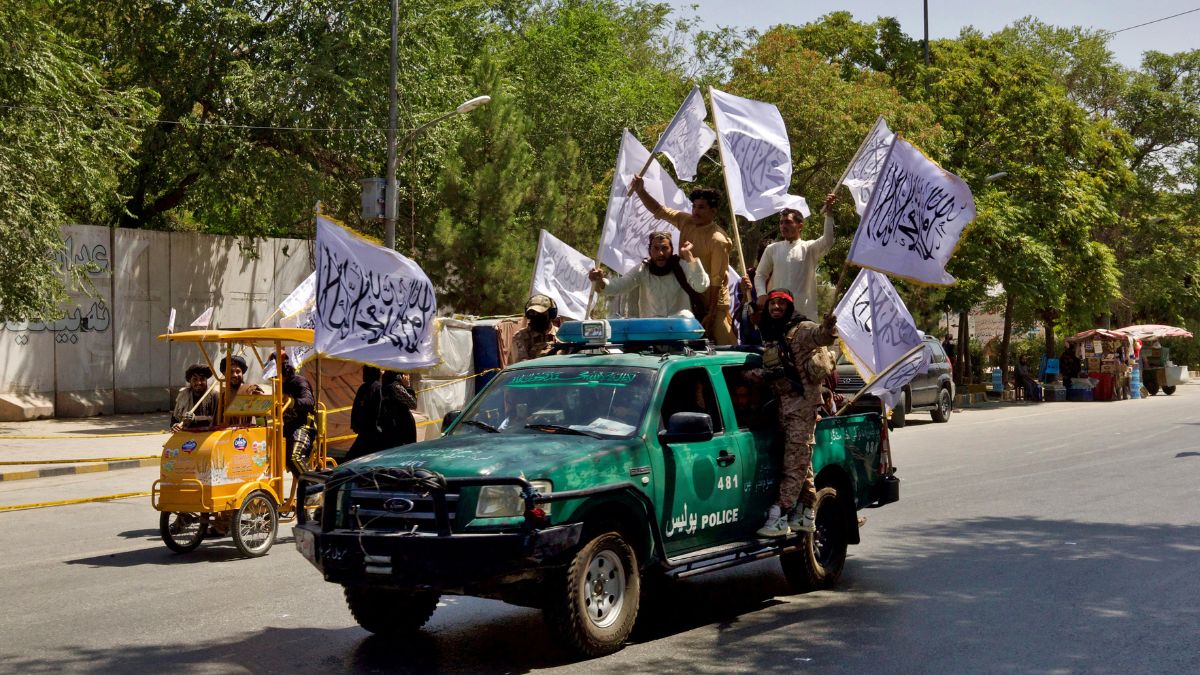More than three years after the chaotic US exit from Afghanistan in August 2021, a major concern has resurfaced in regional and global security discourse — the fate of billions of dollars worth of American military equipment that was left behind and subsequently seized by the Taliban.
An official report by the US Department of Defense in 2022 confirmed that around $7 billion worth of military hardware was not evacuated during the withdrawal and now forms part of the Taliban’s arsenal.
The inventory included a vast range of combat-ready equipment: 78 aircraft, 40,000 military vehicles, over 300,000 weapons, air-to-ground munitions, communications systems and night-vision devices, among others.
While Pentagon officials have stated that most US military equipment used by their troops was either destroyed or retrograded, the weaponry that remained — largely transferred to Afghan security forces — was captured by the Taliban during their swift return to power.
Taliban leaders have openly acknowledged control over the weapons and have even showcased them during public parades and events.
“The weapons that America abandoned in Afghanistan, as well as those provided to the former Afghan regime, are now in the possession of the Mujahideen [or Taliban forces] as spoils of war,” Zabihullah Mujahid, the Taliban’s chief spokesperson, said during an X space session in February earlier this year.
He asserted, “The Afghan people now own these weapons and are utilising them to defend their independence, sovereignty, and Islamic system.”
Pakistan concerned by US arms in Afghanistan
Pakistan’s Deputy Prime Minister and Foreign Minister Mohammad Ishaq Dar raised the issue of these weapons in a phone call with US Secretary of State Marco Rubio earlier this week.
According to Pakistan’s Ministry of Foreign Affairs, Dar highlighted the threat posed by US-made weapons now in possession of various armed groups, and both leaders acknowledged the urgency of addressing the problem.
“The two leaders also discussed the situation in Afghanistan. Secretary Rubio agreed on the need to resolve the issue of US Military equipment left behind in Afghanistan,” read the official Pakistani statement.
The conversation marked their first official engagement since Rubio assumed the role of Secretary of State and covered a broad range of topics, including bilateral relations, trade, investment, and counter-terrorism.
“DPM/FM Dar reiterated Pakistan’s commitment to strengthening its partnership with the United States. He emphasised the importance of strengthening cooperation in areas such as trade, investment and counter-terrorism,” the ministry said.
Rubio, in turn, stressed that “cooperation in economy and trade would be the hallmark of future relations between the two countries,” particularly in sectors such as critical minerals.
In a separate statement, US State Department spokesperson Tammy Bruce confirmed that Rubio expressed appreciation for Pakistan’s role in counterterrorism, including the arrest and handover of ISIS-K operative Mohammad Sharifullah.
The two also discussed cooperation on law enforcement and issues like illegal immigration. Notably, Pakistan is currently serving a two-year term as a non-permanent member of the UN Security Council.
American arms appear in Kashmir
Beyond Afghanistan, concerns are mounting over how some of these weapons may have entered other regions, especially India’s Kashmir.
A January 2023 report by NBC News quoted Indian official and security forces who stated that terrorists operating in Kashmir — particularly from Pakistan-based groups like Jaish-e-Mohammad (JeM) and Lashkar-e-Taiba (LeT) — have recently been found in possession of US-origin firearms such as M4 and M16 rifles, which had not been commonly seen in the conflict earlier.
Security personnel in Kashmir have recovered these arms following operations and gunfights. In one notable instance, police reported seizing an M4 carbine rifle after a clash that resulted in the deaths of two JeM terrorists.
Indian Army spokesperson Lt. Col. Emron Musavi, based in Srinagar, told NBC News at the time, “It can be safely assumed that they have access to the weapons left behind.”
This development has sparked concern within Indian security circles. Maj. Gen. Ajay Chandpuria, in 2022, had noted that recovered weapons and equipment indicated a spillover of advanced military technology, including night-vision devices, from Afghanistan into Kashmir.
These assessments were reinforced by statements from Jammu and Kashmir Lt. Governor Manoj Sinha, who assured that authorities were closely monitoring the issue and taking proactive measures. “We are monitoring the situation closely and have taken steps accordingly. Our police and army are on the job,” he stated during a news conference in Srinagar in 2022.
Kashmir police official Vijay Kumar also highlighted the region’s readiness to counter the evolving threat. “Our forces are tracking down militants on a daily basis,” he had told NBC News. “We are constantly upgrading our equipment and have the latest weaponry at our disposal.”
Experts believe the Taliban may be selling these weapons to aligned terror groups like JeM and LeT or through smugglers operating in Pakistan.
NBC News quoted Ajai Sahni, a counterterrorism expert and executive director of the Institute for Conflict Management in New Delhi in the report, who said that while the more advanced weapons would be harder to smuggle into the region, there’s clear evidence of some infiltration.
What next?
The impact of the abandoned weapons is not limited to regional concerns. Analysts warn that these arms could eventually surface in other conflict zones, including Yemen, Syria, and parts of Africa, depending on how tightly the Taliban controls their dissemination.
The Taliban, meanwhile, has expressed its unwillingness to return any of the captured equipment. Abdul Qahar Balkhi, spokesperson for the Taliban’s Ministry of Foreign Affairs, said in an interview that the assets now belong to the Afghan state.
“These are the assets of the state of Afghanistan. They will continue to be in the possession of the state of Afghanistan,” he told CBS News in February this year_._
He further added: “People don’t make deals on the assets of their states. They make agreements through dialog and engagement to find spaces and areas of common interest.”
In response, US President Donald Trump, who returned to office in 2025, has sharply criticised the Biden administration for allowing the equipment to fall into Taliban hands. During a rally in Washington, he said, “If we’re going to pay billions of dollars a year, tell them we’re not going to give them the money unless they give back our military equipment.”
The Taliban has publicly rejected this demand, reiterating that it has not received any US financial aid since taking power and does not intend to surrender the arms.
With inputs from agencies


)
)
)
)
)
)
)
)
)



